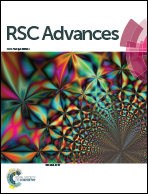Dissolution and oriented aggregation: transformation from lepidorocite to goethite by the catalysis of aqueous Fe(ii)†
Abstract
At a low temperature, lepidocrocite-to-goethite transformation occurred in the presence of Fe(II) ions, whereas lepidocrocite was stable in the absence of Fe(II) ions. The results reveal that Fe(II) accelerates the dissolution of the lepidocrocite. The dissolved Fe(III) ions hydrolysed to form goethite. The mechanism of transformation included dissolution-reprecipitation and oriented aggregation.


 Please wait while we load your content...
Please wait while we load your content...